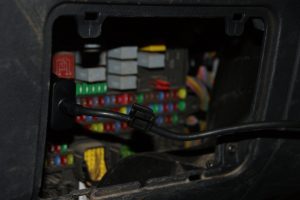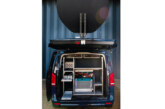Rob Cooper, at Commercial Motors Watford, tests out the latest technology diagnostics tablet from Delphi. CVW finds out how he got on…
What it does
The Delphi DS450E package offers OE-level diagnostics across the key electronics systems for both light and heavy duty vehicles, as well as passenger cars. Powered by Windows 8, the tablet combines ultra-mobility and complete connectivity with reliability. With a wide-view 10.1” IPS (in-plane switching) display and five-finger multi-touch technology, technicians can quickly determine fault codes and be guided to the suspect area.
Key functionality:
■ Full system coverage;
■ Service light reset;
■ Read and erase fault codes;
■ Read and graph live data parameters;
■ Intelligent system scan (ISS)–full vehicle ECU scans;
■ Programming;
■ Component activation and adjustment;
■ ECU coding;
■ Print and save diagnostic reports;
■ Full OBD flight recorder;
■ VIN recognition;
■ Battery voltage monitoring;
■ Intelligent system up dates (ISU);
■ Intelligent system identification (ISI).
The first thing to note about the Delphi DS450E is how small and nimble it is. It really makes the process a whole lot easier when you can hold the tablet in one hand while carrying out the diagnosis. It’s a very easy tool to just pick up and use and it has detailed and self-explanatory on-screen instructions for each step of the process. The functionality is also very easy to understand and navigate. You can simply hover the stylus pen over any button on the screen to see what that function does.
The benefit of the tool in the CV world is the vehicle coverage, it covers the vast majority of the CV vehicle parc, reducing the need for multiple bits of kit which may be needed if you are servicing passenger cars. It’s also a very useful device to give you the ability to run a systems scan on a vehicle before beginning any work. Very often, I find that vehicles have been modified since production and it can sometimes be hard to tell which systems are in place on the vehicle, without running a scan on it. I tend to plug the device in at the start of a job and then let the scan run while I set up the lifts or other equipment.

The process
To start with, input the vehicle registration number and you are presented with a video which clearly shows where you need to plug in the device. The cable pack which comes supplied with the kit is for newer vehicles, as I mainly service older vehicles I would need to purchase an add- on cable kit to make sure the sockets were compatible. Once the tool is hooked up, the device lights up to show that it is properly connected.
When you are hooked up, you select the model and year of the vehicle and then pick from a list of drop-downs as to what you’d like to scan. The tool enables you to do an overall system scan, or drill down to a more specific area if needed.
You can then select what it is you’d like to look at, be it fault codes or checking data. You can also select the option to record data, which is very useful when road testing as it means you can just plug- in, select record and then drive. There is no need to constantly check the device for intermittent faults while you are driving, as all the data is stored in the tool for when you return to the workshop.
Giving your customers the full picture
With the built-in report function in Delphi’s DS software, you can add fault codes, live data and even your own company details to the job card. Print the final results and you’ll have a professional report for your customers, detailing the work you have performed on their vehicle.
If you need to submit proof of warranty work too, you can use the job card, which you can also attach pictures too.
Conclusion
The most important thing I find with tools like this is to use it as just that, a tool for diagnosing faults. Without diagnostics equipment these days, you’ve got no chance, but there is a common misconception amongst technicians that you can just plug in the device, see the fault, clear it and fix the issue. This is not the case as the fault will then often reappear when the customer drives the vehicle away.
Often the source of the fault is not the source of the problem and simply replacing a ‘faulty’ sensor for example, won’t fix the fault if it’s actually the wiring behind the sensor that is where the fault stems from. Used correctly, as a diagnosis tool and not a problem solver, it’s a very handy piece of kit indeed and one which I’d recommend.









